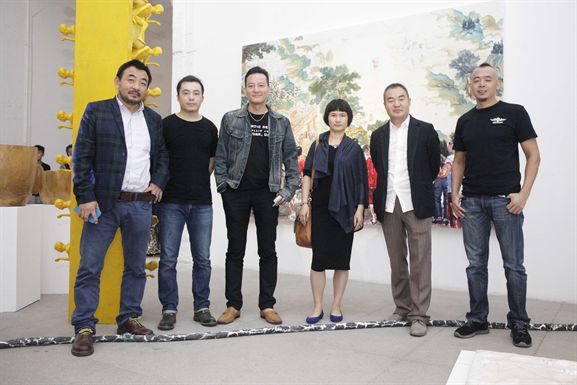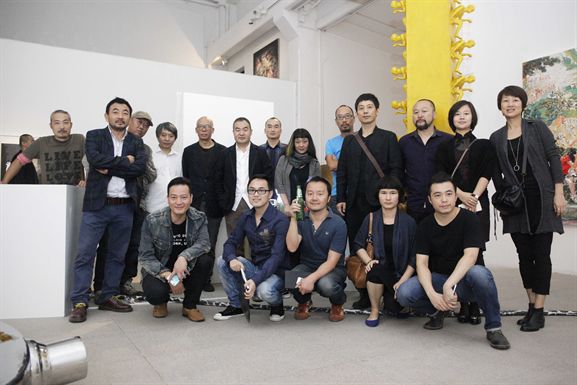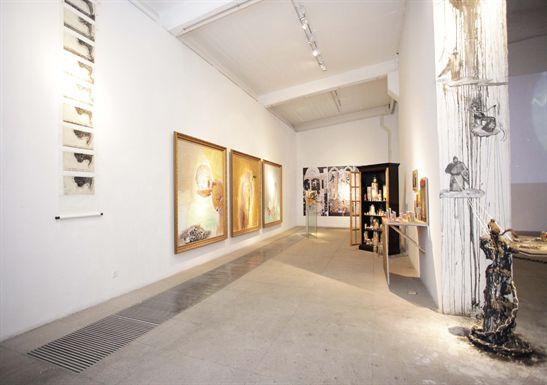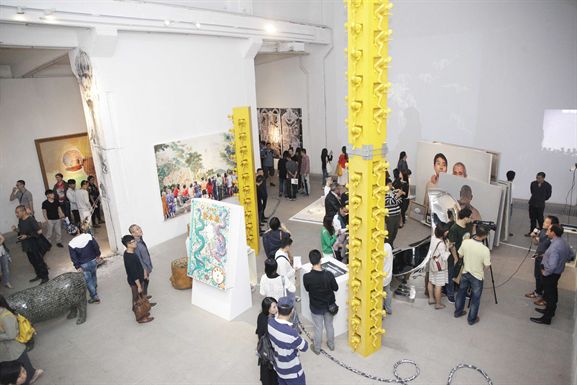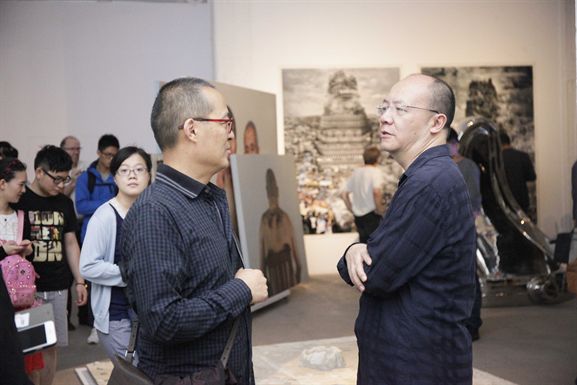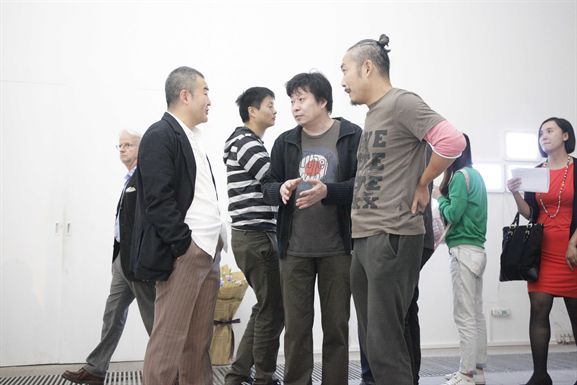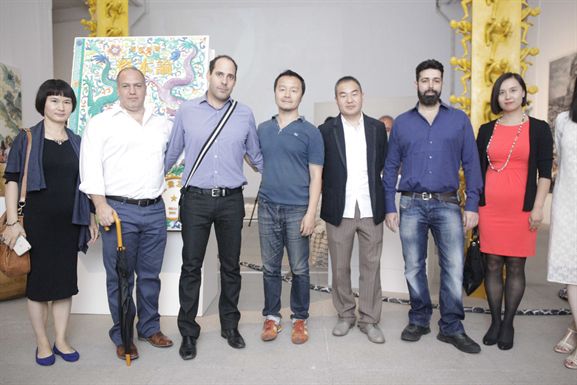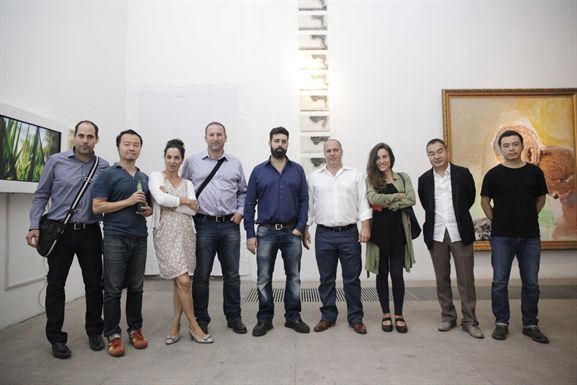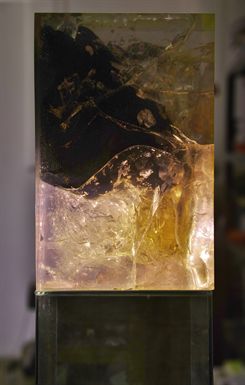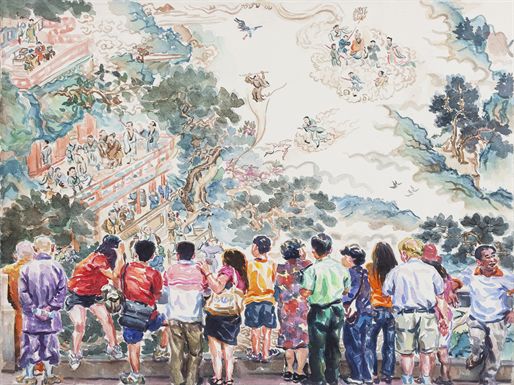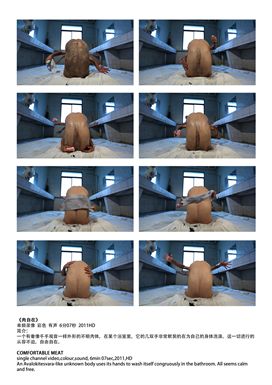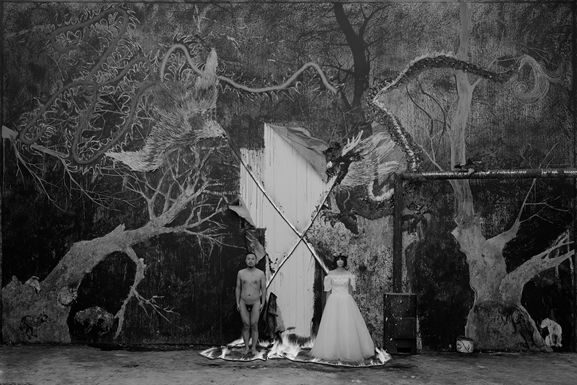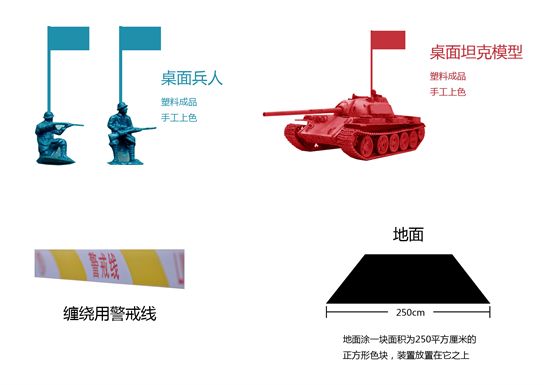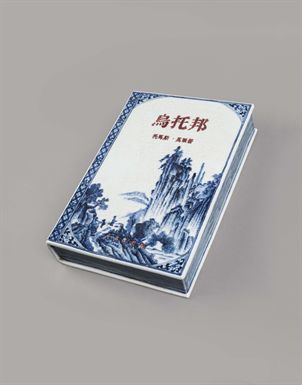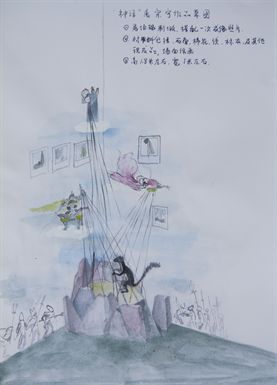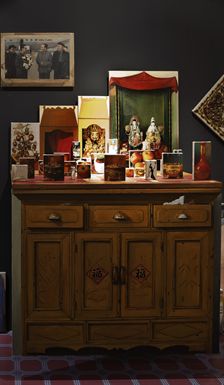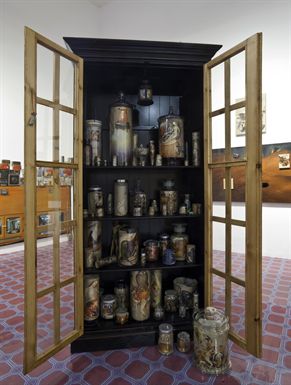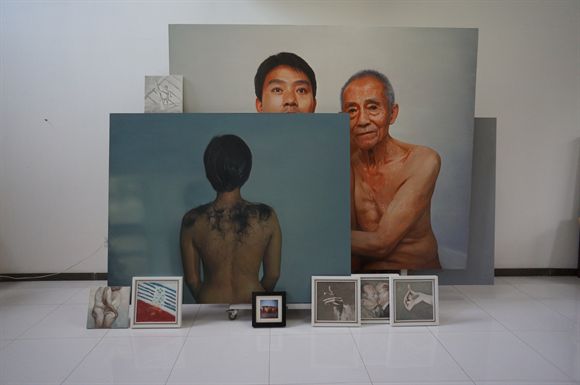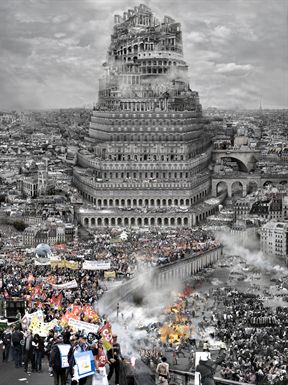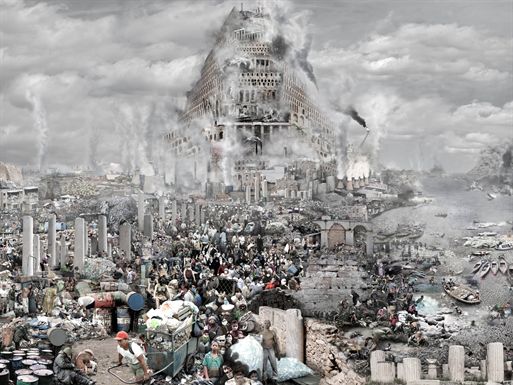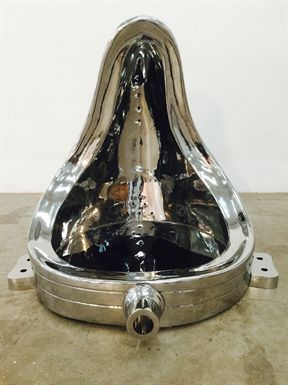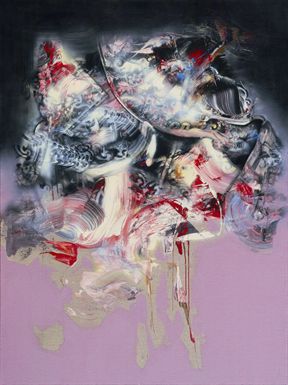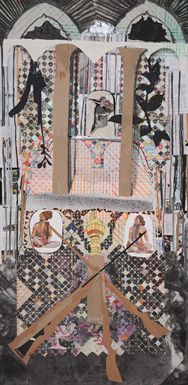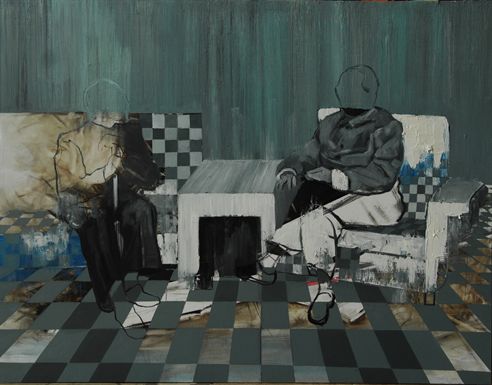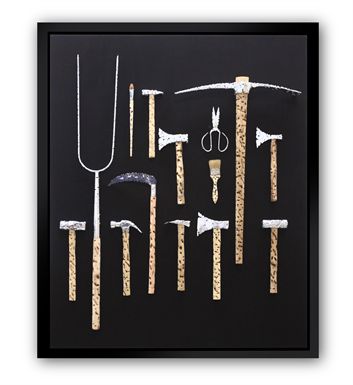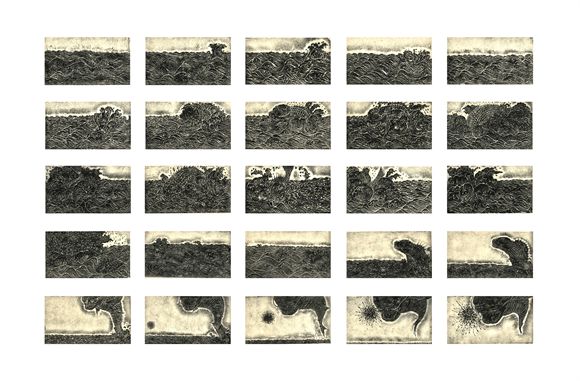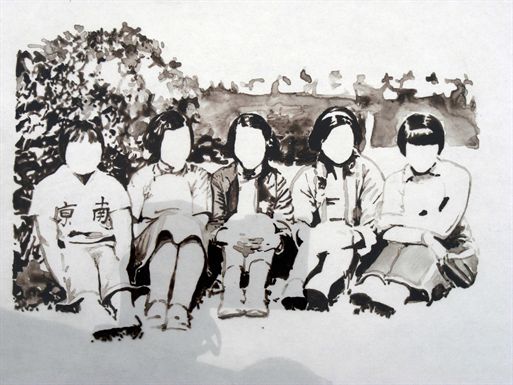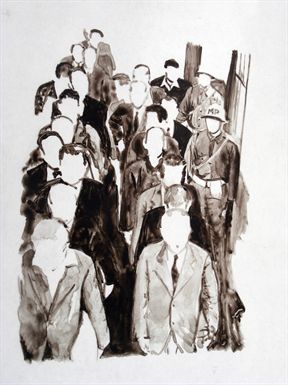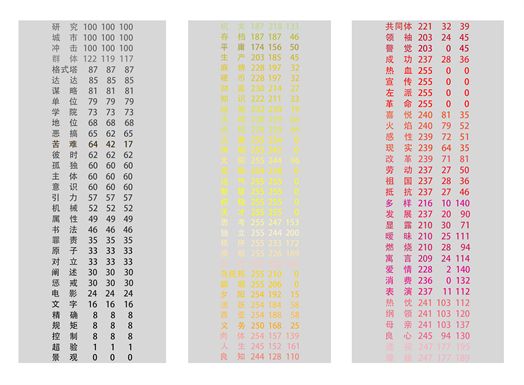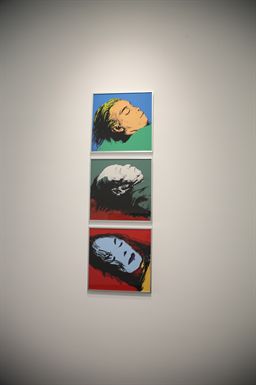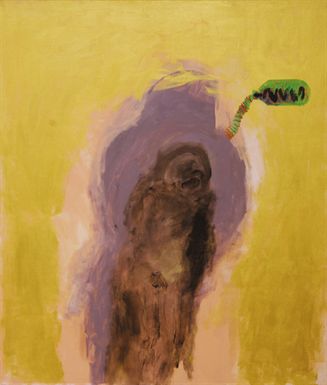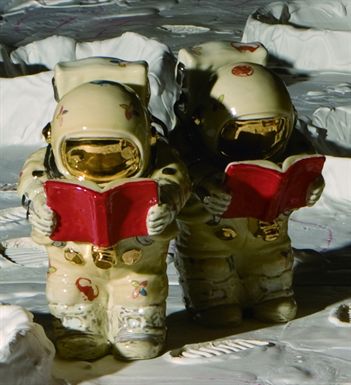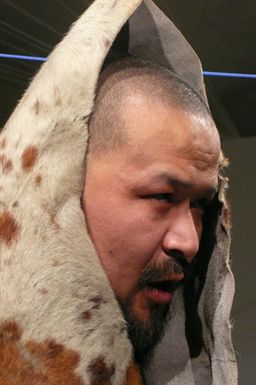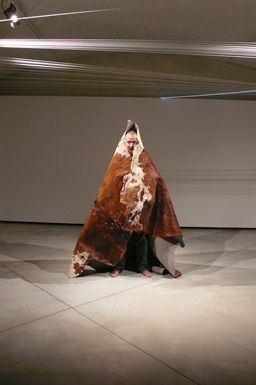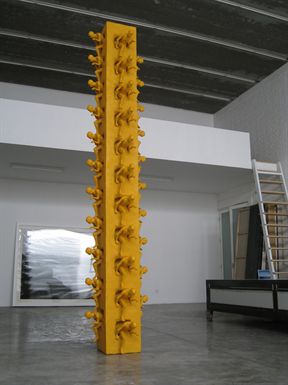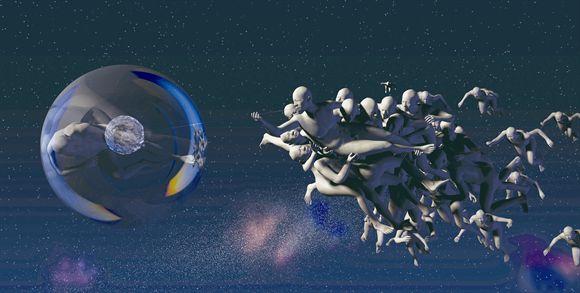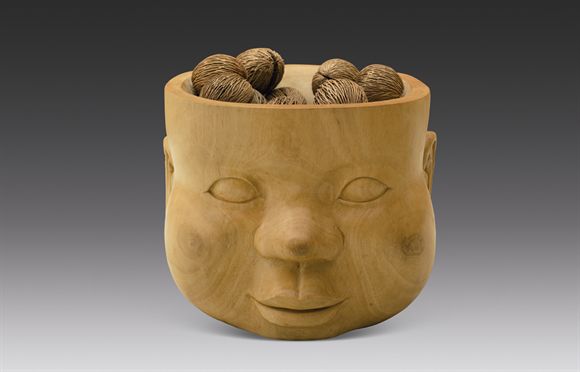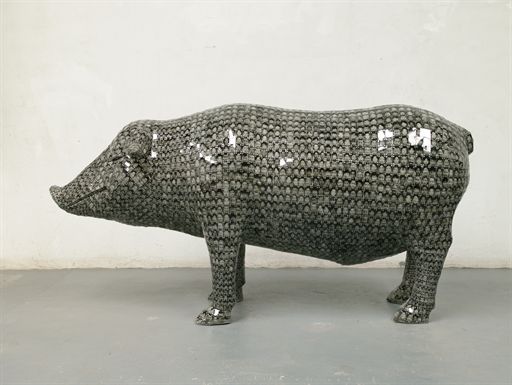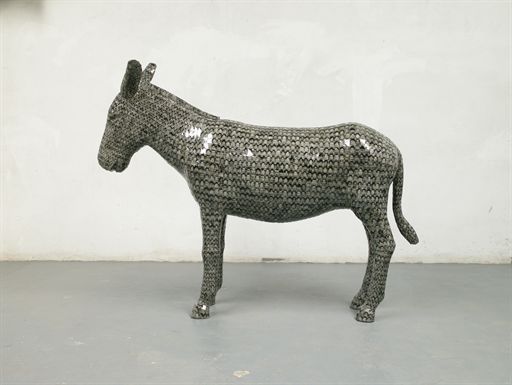Sep 05 - Oct 08, 2015
Press Release
Producer:Sun Yongzeng
Co-producer:Gedalian Afterman
Project management:Cao Maochao
Project coordinator:Wei Zhuo
Artists:Bai Yiluo,Bing Yi,Chang Xin,Cao shu,Chen Guang,Chen Yujun,Dong Wensheng,Dong Yuan,Du Zhenjun,He Chi,He Yunchang,Huang Min,Li Yiyou,Ma Jun,Miao Xiaochun,Qin Ga,Tang Bohua,Xi Jianjun,Xu Yihui,Xu Jing,Wu Yuren,Wang Yang,Yi Lian,Zhang Wenrong,Zhong Biao,Zong Ning
Organizer:Whitebox Art Center
Co-organizer:Yellow Mountain Contemporary Art
Opening:2015.9.5,16:00
Date:2015.9.5-10.8
Venue:NO.B07 of 798 art district ,NO.2 Jiuxianqiao road, Chaoyang district,Beijing
On September 5th, 2015, the group exhibition Myth curated by Wei Xing will open atthe Whitebox Art Center. This exhibition will present over 30 works of art by 26 artists, consisting of video art, photography, installation, sculpture,painting and other forms of artistic expression. The exhibition seeks to restorethe spiritual and mysterious realm of primitive myths by creating unique interactions between the artworks in a dark space - it is an exhibition that inquires and reflects on the mythological phenomena in contemporary art today.
What is mythology?Mythology is the early system of beliefs of human civilization. The Dawn of Time in China and Genesisof the Judeo-Christian Traditions are both examples of creation mythology.Myths shape our understanding of the link between humans and nature. They also constitute the original memory of nations and human history.
Examples of individual events which have led to the formation of mythological memories include the cruelty and bloodshed of the French Revolution in the 18th century and the industrial revolution launched in Great Britain in the 19thcentury. NASA's Apollo Project of sending a man to the moon was probably the biggest myth of the 20th century.In today's era of globalization, theinternet, and hi-tech what will be the biggest mythof the 21st century? Will contemporary art become a major system of critical knowledge, and the origin of vital ideas and inspirations? Will it become today's myth and legend? In modern times the spiritual realm is diminishing and disappearing. The waning in philosophy and religion has been replaced by theprosperity of contemporary art, and the artists are seen as today’s magiciansand prophets somehow possessing supernatural powers.
Myth, asan exhibition of contemporary art, not only reflects on the forms and content of contemporary myths, but actively engages in the creation of new contemporary mythology.
This exhibition is co-hosted by the Yellow Mountain Contemporary Art , and will continue until October 8th,2015.
Curator Article
Myth
Wei Xing
What is mythology?Is mythology about the legendary story of Goddess Nv Wa using the stone of seven colors to repair the holes in the sky ? Or it refers to the epic of Odyssey’s expedition with his heroes written by Homer?
Mythology is the early system of beliefs of human civilization. It is the founding rock in the mystery and fear of the unknown of nature. Through collective hearsay and linguistic creation, myths are transformed into various religious shrines, ghosts and spirits, on which human civilization has built corresponding ethics and order.
Mythology and religion are a pair of twins, together they created the dawn of human civilization. Mythology is the source of religion, and religion is an elaboration of myth. Contemporary human society is dominated by various ideologies; ideology is also a political myth today.
Human civilization originated from myth. The Dawn of Time in China and Genesis of the Judeo-Christian tradition are both examples of creation mythology. Myths shape our understanding of the link between humans and nature. They also constitute the original memory of nations and human history. Humanity needs myths, just as ethics and religion are necessary. There is an undying myth in everyone’s mind. Human beings are constantly creating new myths - the myth of love; the myth of the hero; the myth of the master; and the myth of the leader. New myths merge with the old ones. Through this process of reconstruction, interpretation and evolution, new legends and myths are created. This applies both to myths of the past and myths of the future. Modernity is the biggest myth of all. Formulated on the basis of the Enlightenment, and further empowered by technology and science. Modernity has reshaped the genetic structure of human society, and has changed the course of human existence. As the perfect outcome of Modernity, Globalization as a political, economical as well as cultural phenomenon, strives to bring the world closer together as a homogeneous community and in the process gradually changes the traditional relationships between man and nature.
The old gods are dying, but has a new God been born? What myths will we create in the future, and will our future look like the myths we create today? Will humanity itself become the ultimate myth?
Every period in time generates its own myths, and each civilization has its genesis and legends as its national narrative. Among the individual events in the formation mythological memories, the biggest myth of the 18th century must have been the cruelty and bloodshed of the French Revolution; and the ugly industrial revolution launched in Great Britain of the 19th century. The Apollo Project of sending a man to the moon, by NASA, was probably the biggest myth in 20th century; Yet what will be the biggest myth of the 21st century? Will contemporary art become a major system of critical knowledge, and the origin of vital ideas and inspirations? And thus become a new kind of myth and legend?
In the field of ideology and ideas, the social theories and political manifestos which evolved from the French Enlightenment Movement and the great successor of these isms and ideas – Western modernity, which is undoubtedly the greatest myth of human ideology in recent history. It coerced the power of science and technology, establishing a dichotomy between nature and humanity, sweeping the globe with the ideas of democracy, freedom and progress over the last few centuries. These ideas have gradually become the standard in evaluating social development, and was seen as the exclusive and sole universal values. Every non-western nation has set modernity as suggested by the Enlightenment Movement as the only historical discourse their societies should follow. It has almost replaced the Judeo-Christian God and any other religions in becoming the most powerful belief system in the world. French essayist and philosopher Roland Barthes in his text “Myth Today”, analyzed an image on the magazine cover inter alia, a black soldier salutes the French national flag, to demonstrate the power of media and knowledge, and how they have simplified the complexity of history through their presentation of convincing “real stories”, in service of the great dreams of the French empire. Further more, this could also be interpreted as the demonstration of Francis Fukuyama’s theory of the “End of History”, that human society has finally reached a historical state in which everyone now lives in the final victory of freedom and democracy, that the French national flag is a symbol of the idea of modernity. Here symbolism is being replaced by inferences and analogies, the correctness of modernity and its universality is cleansing the spirits and thoughts of humanity.
“Knowledge is power”, a widely known and popularized slogan stated by Francis Bacon in the 17th Century. His compatriot, Adam Smith, created the legend in the field of economics – the invisible God’s hand in the free market. Another economist, Karl Marx, also believed in linear progression of history, the ideological story he instigated acted as an alternative modernist manifesto that split the world into two. Modernity, in various forms, has since then made mankind themselves a new God!
Today, humanity lives in the era of Internet and fast developing bio-technology. At the same time, the spiritual realm is diminishing and disappearing. The waning in philosophy and religion has been replaced by the prosperity of contemporary art, and the artists are seen as today’s magicians and prophets somehow possessing supernatural powers. Art exhibitions large and small are presented on all corners of the globe, and the successful artists are been portrayed as stars covered by a mystic halo created by the public and the media as they become part of today’s myth. And therefore a new“mythology” will be born, it aims to celebrate the emerging power of contemporary art as a new form of ideology, in a space hidden in the heart of Beijing’s 798 Art District. There are many “small shrines” created by artists are installed in the space, in which it is filled and dominated by various versions and forms of myth. The works of each artist iterate the meaning of the myth to a certain degree, expanding the boundaries of the concept of myth. Here, tradition is juxtaposed to modernity, where the future is connected to the past. The Venus of the West and the Money God of the East, the stars of the commercial world and the ghosts of ideology rejoice in one place. They have been raised up high, and live in harmony - this is the spiritual totem they have created for the contemporaries, but they are also symbolizing the ruins of human civilization.
Soon, a space in the style of Borges with multiple crossings is about to open, the disorderly and multiple dimensions of time and space will come into contact. As one walks through it, he or she would encounter Shamanistic witchcraft that inseminates bizarre plants in the hollow of the human brain as he walks on a dark small path. These plants are like the crevices and folds of the human brain, where the flashes of ideas flicker. Above the eccentric sculpture of hollowed brain, the wild imagination of the new Genesis is enchanted in the sky: countless 3D digital figures are projected, struggling in the temporary space between heaven and earth, this is the contemporary salute and imagination, the next episode of Michelangelo’s Sistine murals. On earth, on the altar table above a resting bed of an old village woman, Confucius, the Money God and the Bodhisattva share the rituals of veneration. Nearby is a portrait of the first generation of national leaders, they were also worshiped as those ancient gods and goddesses . The backdrop of this entire scene stands the Tower of Babel at the end of the road. It pierces through the clouds; a pile-up of images consists of towers and construction sites from cities across China and Asia. The legend of the Tower of Babel warns humanity of their ambitious attempt to replace God, and today’s Asian nations project their economic success and miracle in their mad pursuit of mythical ideology through effective symbolism: in their endless admiration and desire for towering buildings. These buildings are the modern Tower of Babel, they dominate the skies of Asian cityscape like massive phalluses piercing towards the smog filled skies.
Meanwhile, under the massive shadow of the Tower of Babel, the migrant workers in the cities attempt to compete in their lung capacity as they try to blow up the red flags hanging on the flagpole. They bellow up their cheeks and blow towards the plastic straw at the bottom of the flagpole, as if determined to blow up the red flag, flapping in the wind, while their illogical and laughable behavior make their Don Quixote effort seems to be doomed to failure.
The red flag flaps lifelessly in the air, while clouds hang in the blue sky. Slowly, a humming sound is heard at a distance, an unknown flying object with the male body, the head of the dragonfly and large compound eyes, and transparent wings roam and fly overhead. It looks like a futuristic super-being, or a breakthrough in genetic technology. A new intelligent species is born, something would be unimaginable through the Darwinian evolutionary theory. It symbolizes the myth of technology that has potentially replaced God, and became our new religion. The dragonfly man slowly flies over the Tower of Babel, crossing over the stumbling donkey and his friend, the piglet. The two animal’s bodies have been tattooed with human figures, as if they are carrying the burden of human spirit and desire. They pass by a desolate square, where three ceramic monuments stand. Deep cracks penetrate the monuments. They are so fragile that they would disintegrate by one touch. They are engraved with Adam Smith’s The Wealth of Nations, Marx’ Das Kapital, and the Old Testament of the Bible. At first glance they seem rather old and weathered by time and respectful visitors. But then one notices with surprise an enormous urinal oddly placed beside the three monuments. Its stainless steel body seems like an erotic figure of a woman, while inside it is filled with black ink, like a bottomless abyss of mystery. Apparently, this is a mimic work of a master in the history of art, with the size being blowing up gigantically. As it symbolizes the origin of contemporary art and become a legend today, thus has earned the right to be placed on the square to be admired.
There is a park to the east side of the square, in which full of various types of visitors and vagabonds. They unanimously stare at the hill in the middle of the park, because a magical play is staged. There are various gods and goddesses from Chinese mythical stories and legends dancing and playing, the Flying Apsaras and ghost master Zhong Kui are among them, with musical instruments in their hands. As if it is a grassroots troupe from the countryside performing in the city, the noisy sound of pipa and Chinese violin piercing through the silent square. And seen through the dragonfly man’s bird-eye view from above, a game of war is about to begin on the horizon. Humanity loves this type of game, The sword of Damoles hangs above people’s dream again. But it seems like a children’s play, a plastic table pilled with small fast food bags is going to the battle field of toy soldiers and tanks. At an empty plot nearby the game site, a few astronauts wearing the uniforms stand on a high platform made of white and greyish fiberglass. The platform imitates the geology of the moon, as if filming the historical moment of stepping on the moon. The astronauts hold the small red treasure book, symbolizing the renaissance and hope for the nation. It is uncertain whether this is a performance for a commercial promotion, or perhaps a tribute to the mythical Apollo project of landing a man on the moon?
Six Hundred years ago, a writer in Ming China, Wu Cheng’an wrote an epic novel Journey to the West. Every Chinese is familiar with the Monkey King who has supernatural powers, and disdain for the heavenly social and moral orders. As Confucianism governed the feudal China for two thousand years , the society was in a hierarchical order of the heavens, the emperor and the ancestors. if an insignificant intellectual would like to express his rebellious spirit or was to challenge the status quo, the best place to do so is none other than through writing on paper. Wu Cheng’en appropriated the Monkey King to express his discontent and criticism of the ritualistic, religious and lawful society. The mythical and religious stories have created a magnificent, imaginary and a brave new world.
Six hundred years later, the legends continue today. It is the eternal spiritual totem for humanity and its ultimate spiritual homeland. In 20 years, if a group of people will embark an one way trip to Mars, then they will also become the legends and myth in the history of human space travel in the future. Let us hope legends will continue to develop and evolve generations after generations, like the towers of Babel that reach towards the boundless emptiness, and continue to rise.
Artist:
Installation View
Artworks
Media Report

